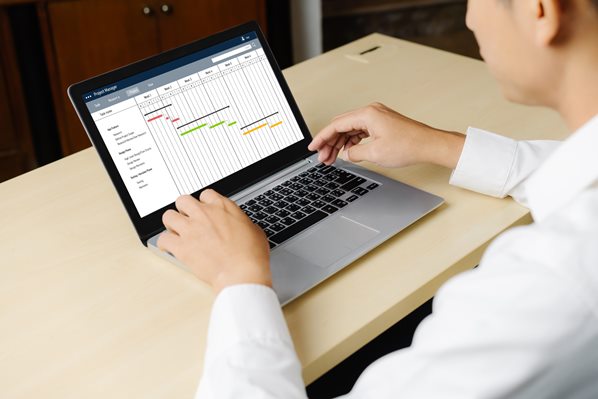
Running a service-based business means making labor costs and other company-related expenses work, juggling shifts, last-minute changes with time off requests, and employee availability—all while keeping customers happy.
Luckily, having the right employee scheduling software can save you time, reduce errors, and boost productivity. But with so many options out there, how do you pick the best one?
Don’t worry. This guide walks you through the key factors to consider so you can find the perfect fit for your business. Read on.
Understand Your Business Needs
Before diving into features, take a step back. What problems are you trying to solve? Are you struggling with no-shows, shift swaps, or overtime costs? Maybe you need better communication tools or integration with payroll.
Ask yourself the following questions for a better understanding of your company:
- How many employee schedules do you handle for each period?;
- Do you have multiple locations?;
- Are your shifts fixed or flexible?;
- Do you need mobile access for employees to alter time clocks and so on?; and the like.
Knowing your pain points helps narrow down your options for the best-fit staff scheduling software.
Look for Intuitive Scheduling Features
The best employee scheduling software should make your life easier, not harder. Keep in mind the following features you should consider:
- Drag-and-Drop Scheduling: Manually typing shifts is outdated. Look for a system that lets you drag and drop employees into shifts effortlessly.
- Automated Shift Assignments: There are employee scheduling app options out there that use artificial intelligence (AI) to auto-fill schedules based on employee availability, skills, and labor laws.
- Shift Swaps and Self-Service: Employees should be able to request time off or swap shifts without back-and-forth emails.
- Real-Time Updates: Avoid double bookings, understaffing, or other scheduling conflicts with instant notifications when changes happen.
Always come back with your company’s scheduling concerns when vetting top app features.
Ensure Mobile Accessibility
Your team isn’t always at a desk. A great scheduling tool should have employee apps for checking schedules on the go, push notifications for shift reminders and updates, clock-in/out features to track employee hours directly from phones, and other mobile-friendly features.

Check Integration Capabilities
Your scheduling software shouldn’t work in a vacuum. It should sync with your workplace systems like payroll systems for accurate employee pay, time-tracking tools to prevent manual data entry errors, and team communication apps (SMS, team chats, and the like). Seamless integration cuts admin work and reduces mistakes.
Prioritize Compliance and Labor Laws
Scheduling isn’t just about filling shifts—it’s also about staying on the legal side of labor legislation and rules. Look for the following features in your employee scheduling software of choice:
- Break and overtime alerts to avoid violations;
- Predictive scheduling laws compliance for cities and regions that have passed legislation concerning the subject;
- Exportable reports for audits or disputes; and so on.
The last thing you want is a lawsuit because your software didn’t flag an overtime issue.
Evaluate Communication Tools
Miscommunication leads to no-shows and frustration. Your software should help by offering the following helpful features: in-app messaging so employees don’t need separate texts or emails about their schedules, announcement boards for company-wide updates that everybody can view, shift claim options so employees can pick up open shifts fast, and so on.
Fewer misunderstandings mean smoother operations.
Consider Scalability
Your business won’t stay the same size forever. Choose software that grows with you. Ask the following questions when evaluating the scalability of your staff scheduling software or tool of choice:
- Can it handle more employees or locations?
- Does pricing stay reasonable as you expand?
- Are advanced features available if you need them later?
Switching systems later is a hassle—future-proof your choice now.
Compare Pricing Models
Budget matters, but don’t just pick the cheapest option. Compare different pricing models and see if they work with your company.
For starters, flat-rate pricing is good for predictable costs. On the other hand, per-user pricing is a great option because it scales with team size. Also, check for hidden fees like setup charges or premium support costs.
Read Reviews and Test Demos
Other business owners’ experiences reveal a lot. Look for consistent praise (reliable customer support, ease of use), common complaints (bugs, missing features), and industry-specific feedback (restaurants, salons, healthcare, and so on) about your pick for staff scheduling software.
Then, try free demos. A half-hour test run tells you more than a sales pitch.
Get Employee Buy-In
Your team will use the app daily. If they hate it, adoption will fail. Involve them by asking for input on must-have features, testing a shortlist with a few employees, selecting a system with a clean, user-friendly interface, and the like.
Happy employees mean fewer scheduling headaches.
To Conclude
Picking the right employee scheduling software isn’t just about convenience—it’s about running your business smoother, saving time, and keeping employees happy. By focusing on your needs, testing options, and planning for growth, you’ll find a tool that turns scheduling from a chore into a breeze.
Now, take the next step: shortlist a few options, try demos, and get ready to reclaim your time!




